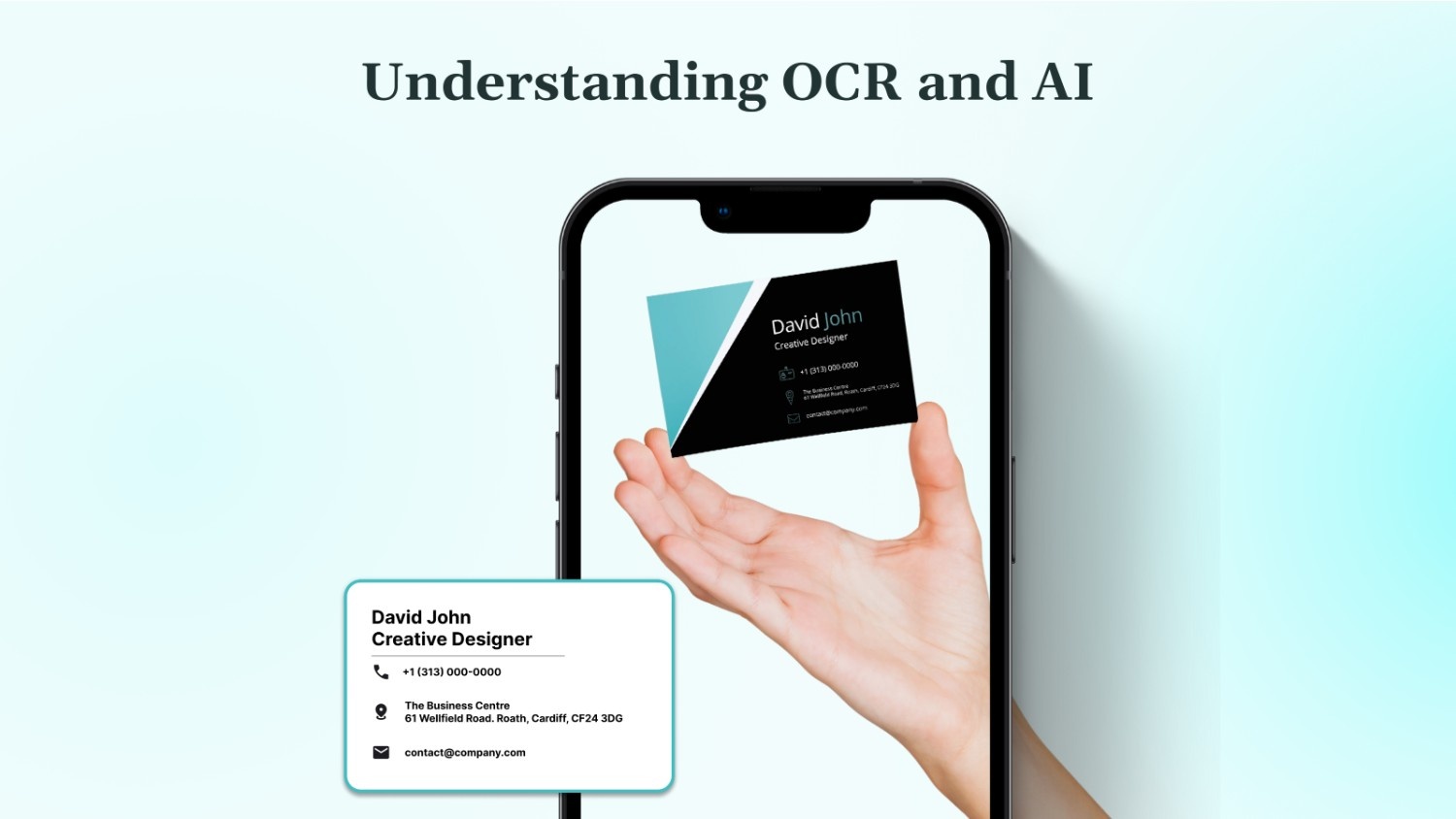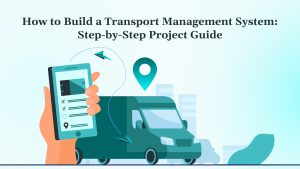When exploring the world of digital transformation, two technologies that often get discussed together are Optical Character Recognition (OCR) and Artificial Intelligence (AI). While both are integral to automating processes and enhancing efficiency, they serve distinct functions.
This blog examines the distinctions between OCR and AI, their interconnection, and the benefits of their integration across various industries, including finance and healthcare.
Let’s get started.
Key Takeaways
- OCR converts printed and handwritten text into machine-readable formats, but it cannot interpret context.
- AI brings adaptability and decision-making capabilities that enhance the accuracy of OCR’s text recognition.
- Combining OCR with AI enhances text recognition by providing context, improving accuracy, and handling complex documents.
- OCR and AI integration drives significant improvements in industries like healthcare, finance, and legal services by automating document processing, reducing errors, and providing actionable insights for decision-making.
- As AI continues to evolve, OCR systems will become more self-learning, handle real-time document processing, and enable smarter categorization and advanced analytics for deeper insights from documents.
Now that you have the big picture, let’s start by breaking down OCR, the foundation of text recognition.
What is OCR?
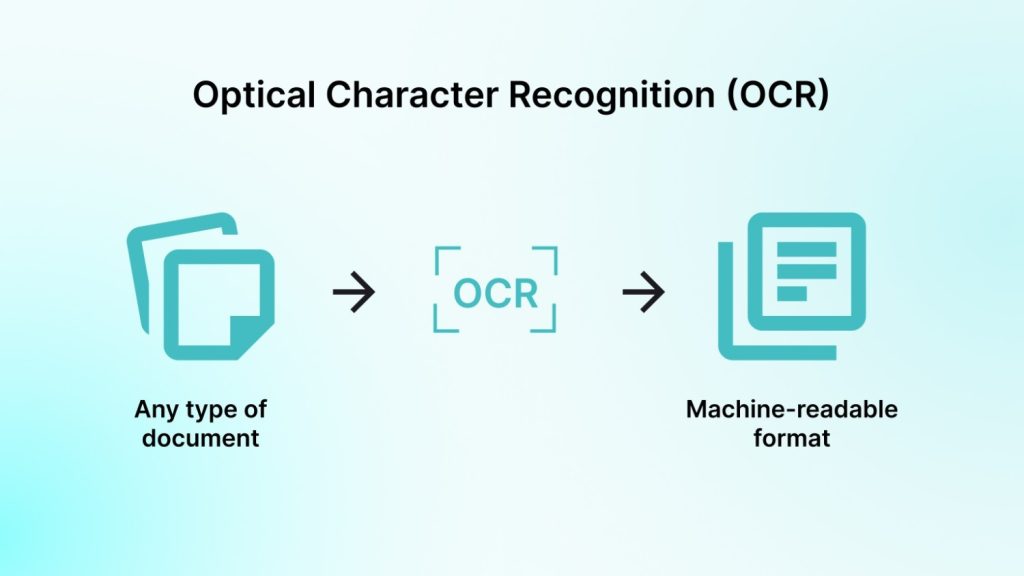
Optical Character Recognition (OCR) is a technology that converts various types of documents, including scanned paper documents, PDFs, and images captured by a digital camera, into editable and searchable data. OCR has been a game-changer in industries that rely heavily on document processing.
Over 68% of enterprises are currently using OCR systems to digitize documents, with over 2.3 trillion documents expected to be scanned and processed globally in 2025.
OCR operates by recognizing text from images and then mapping it to the corresponding characters. This recognition happens through pattern recognition algorithms that compare shapes against a stored database of characters. While OCR works impressively for typed text, it faces challenges when dealing with handwriting or unusual fonts.
Key Features of OCR
- Text Extraction: Extracts printed text from various sources, including images and scanned documents.
- Text Searchability: Converts printed text into searchable formats, enabling better file management and easy access to information.
- Automation of Document Processing: Eliminates the need for manual data entry, significantly improving efficiency.
OCR technology has evolved over the years and can now handle complex tasks like reading cursive handwriting, but it still requires external tools or systems, such as AI, for further processing, like understanding context or dealing with unstructured data.
What is AI?
Artificial Intelligence (AI), on the other hand, refers to a broader concept that involves machines mimicking human intelligence. AI is designed to perform tasks that traditionally required human cognition, such as understanding speech, making decisions, and recognizing patterns. Unlike OCR, which is limited to text recognition, AI encompasses a wide range of technologies and methods, including machine learning (ML), natural language processing (NLP), neural networks, and deep learning.
AI’s power lies in its adaptability. It can learn from data, make predictions, and continuously improve its accuracy through feedback loops. With its ability to process large amounts of information, AI can make sense of complex, unstructured data in ways that OCR cannot.
Key Features of AI
- Adaptability: AI systems can learn and evolve based on new data inputs and experiences.
- Contextual Understanding: AI can comprehend the context and meaning behind data, which is crucial for tasks such as customer service and recommendation systems.
- Automation of Complex Tasks: AI can automate decision-making processes and even improve them over time.
AI has found applications in almost every industry, from predictive analytics in finance to voice assistants in consumer electronics.
Also Read: How to Develop AI Software
With both OCR and AI defined, it is essential to examine their challenges to understand why they often work best in conjunction.
OCR vs AI: Limitations and Challenges
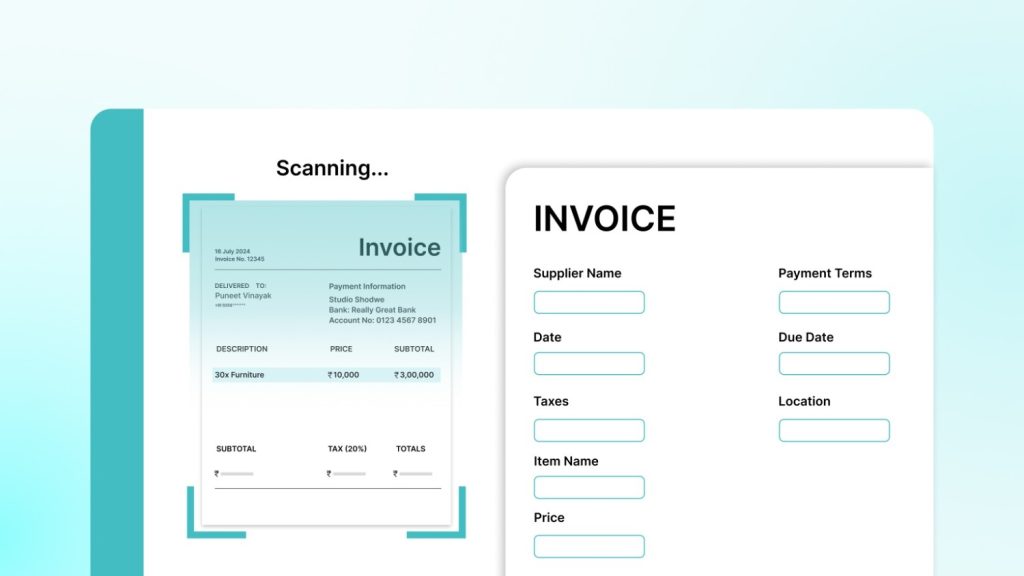
While OCR and AI are both helpful technologies, they come with distinct limitations and challenges that need to be addressed for effective implementation. Let’s break down some of the key challenges and limitations each technology faces, as well as the differences in their capabilities and purpose.
1. OCR’s Challenges with Handwritten and Complex Text
While OCR performs well with printed text, it struggles with more complex forms of text, particularly handwritten text and those with difficult fonts.
- Handwritten Text
OCR’s accuracy declines dramatically when attempting to process handwritten content. Each person’s handwriting varies, making it challenging for OCR systems to consistently recognize characters. Even with modern machine learning approaches, OCR still faces significant hurdles in correctly interpreting cursive writing, poorly legible handwriting, or unusual letter formations. This leads to errors in extracted text, making OCR less reliable for documents that contain handwritten notes or signatures. - Complex Fonts and Layouts
OCR systems are optimized for standardized fonts. When faced with decorative fonts, unusual scripts, or complex page layouts (such as multi-column formats or embedded images), OCR often struggles to detect and interpret the text accurately. For instance, scanning an invoice with both images and text or extracting information from a document with unconventional fonts can result in misinterpretation or missing data.
These limitations underscore the need for AI integration in many OCR applications, where AI can enhance recognition accuracy, particularly in more difficult scenarios.
2. AI’s Challenges with Ethical Concerns and Biases
AI is designed to emulate human-like intelligence and perform tasks that typically require human cognition. However, AI presents a set of challenges that can arise in its application, particularly in terms of ethics and bias.
- Ethical Concerns
AI technologies, especially those in areas like facial recognition and predictive analytics, raise significant ethical concerns. For example, AI algorithms can sometimes lead to invasion of privacy when used for surveillance or personal data analysis. The widespread use of AI in decision-making processes (e.g., hiring or criminal justice) has led to concerns about lack of transparency in how decisions are made. The “black box” nature of many AI models means that users may not fully understand how an algorithm arrived at a particular decision, raising concerns about accountability. - Bias in AI Models
One of the most significant challenges in AI is the issue of bias. AI models are trained on large datasets, which are often collected from historical records or existing data. If the data used to train these models is biased or incomplete, the AI will inherit those biases, leading to unfair or inaccurate outcomes. For instance, in hiring algorithms, AI might disproportionately favor male candidates or overlook qualified applicants from underrepresented groups if the training data reflects historical hiring patterns.
In fields such as healthcare, biased AI models can lead to incorrect diagnoses or treatments based on gender, race, or socioeconomic status. Addressing these biases requires ensuring that the training data is representative, diverse, and balanced to avoid reinforcing existing inequalities.
3. Key Differences in Capabilities and Purpose
While both OCR and AI share some commonalities in data processing, they serve different purposes and operate in distinct ways. Let’s look at the key differences in their capabilities and purpose:
| Feature | OCR | AI |
| Purpose | Primarily used for text extraction from images and documents. | A broad field that mimics human cognitive functions and performs tasks like learning, decision-making, and analysis. |
| Functionality | Recognizes printed and, to a lesser extent, handwritten text, converting it into machine-readable formats. | Adapts, learns, and performs complex tasks based on data, such as decision-making, predictions, and pattern recognition. |
| Strengths | Efficient in converting structured, clear, and printed text into digital form. | Able to process large datasets, recognize patterns, and make decisions based on context and data analysis. |
| Limitations | Struggles with handwriting, complex layouts, and poor-quality text recognition. | Can be biased, ethically challenging, and require large amounts of clean, labeled data. |
| Context Understanding | Does not understand the context of text, focusing only on character recognition. | Can understand context, making it capable of interpreting and processing complex information and decision-making. |
While OCR excels in transforming printed documents into editable formats, it does not inherently interpret the content or understand the context. This is where AI comes in. AI adds layers of intelligence, providing the context, interpretation, and adaptability that OCR cannot deliver on its own.
Transform business operations with custom artificial intelligence and machine learning development services by DEVtrust. Automate workflows, enhance accuracy, and drive smarter business outcomes. Explore DEVtrust’s AI & ML Solutions
Maximizing Benefits through the Integration of OCR and AI
The integration of OCR and AI offers substantial benefits by combining the strengths of both technologies.
How AI Can Enhance OCR’s Accuracy and Application
By integrating AI with OCR systems, businesses can significantly improve the accuracy and adaptability of text recognition.
AI-powered technologies such as machine learning (ML) and deep learning can be applied to OCR outputs to handle complex patterns and variations in handwriting, fonts, and layouts. For example, AI algorithms can be trained to recognize handwriting in various styles and improve the accuracy of OCR when dealing with hard-to-read characters. Furthermore, AI’s ability to contextualize data allows OCR to handle noisy or degraded images, ensuring that extracted text is more reliable and accurate.
By combining OCR with AI, businesses can expand the application of OCR technology beyond simple text extraction to more complex tasks such as extracting structured data from semi-structured forms or understanding handwritten notes in medical records.
Benefits of Combining OCR’s Text Extraction with AI’s Contextual Analysis
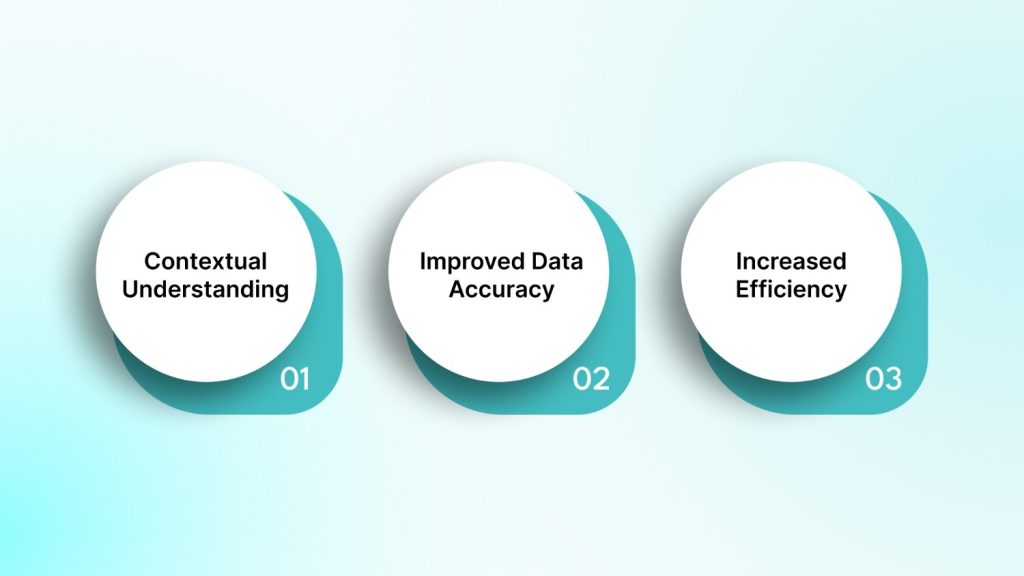
While OCR is focused on converting images into text, AI can provide deeper insights through contextual analysis and intelligent decision-making.
- Contextual Understanding: AI algorithms can process the text extracted by OCR and analyze the meaning behind it. For instance, in legal document processing, AI can identify terms like “defendant,” “plaintiff,” or “settlement” and provide context for each, making the document not only machine-readable but also interpretable.
- Improved Data Accuracy: By analyzing the data extracted through OCR, AI can refine results and correct errors that might arise during text extraction. This is especially useful in scenarios where the OCR may misread certain characters or words. AI’s ability to detect patterns and inconsistencies further enhances accuracy.
- Increased Efficiency: With AI’s ability to automate tasks like data validation and categorization, businesses can save time and resources. For example, an AI system can automatically classify invoices extracted via OCR into the correct financial categories, saving manual effort and ensuring consistency.
By enhancing OCR with AI, businesses can drive higher levels of efficiency, reduce errors, and gain deeper insights from documents, creating more intelligent document processing workflows.
Also Read: Machine Learning Consulting Services and Solutions
Practical Applications of OCR and AI Across Industries
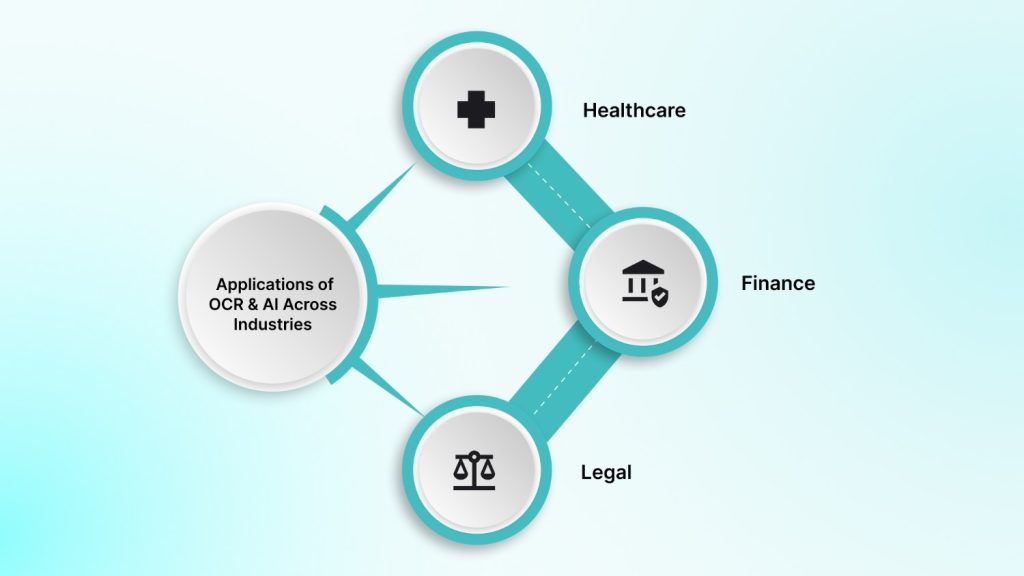
The integration of OCR and AI is particularly beneficial in industries that handle large volumes of documents and require high levels of accuracy, such as healthcare, finance, and legal sectors. Here is how OCR and AI are transforming these industries:
1. Healthcare
In the healthcare sector, OCR is used to extract patient information from handwritten medical records, prescriptions, and insurance forms. AI then processes this data, identifying trends, assisting in diagnosis, and automating administrative tasks like appointment scheduling. The combination of OCR and AI ensures accurate and timely data extraction, which is critical for patient care and operational efficiency.
Example: An AI system that integrates OCR can analyze medical records to identify patterns in a patient’s health history, predict potential health risks, and suggest preventive measures.
Also Read: Empowering Healthcare with IT: A Look into DEVtrust’s Impact
2. Finance
The financial sector benefits significantly from the integration of OCR and AI, as it automates document processing tasks such as invoice recognition, financial reporting, and risk assessment. OCR extracts data from financial documents, while AI analyzes that data to detect anomalies, generate reports, and even predict financial trends. This reduces manual errors and accelerates financial decision-making processes.
Example: An AI system can automatically categorize financial transactions extracted via OCR, detect fraudulent activities, and generate reports in real time, improving compliance and risk management.
3. Legal
In legal industries, OCR is used to extract text from contracts, case files, and court documents, while AI can analyze this text for key clauses, identify important terms, and flag risks. AI’s ability to understand legal language and context allows for faster document review, contract analysis, and compliance monitoring.
Example: An AI-powered tool integrated with OCR can scan contracts for specific clauses like “termination,” “liability,” or “indemnity” and highlight them for review, saving time in contract negotiation and legal research.
Improving Document Workflows through Intelligent Document Processing (IDP)
Intelligent Document Processing (IDP) combines OCR and AI to automate and improve document workflows. IDP enables businesses to not only extract text from documents using OCR but also to understand, classify, and process that data intelligently with AI. The integration of these technologies results in faster, more accurate, and efficient document handling.
With IDP, OCR converts unstructured data (text in scanned images or PDFs) into structured, searchable data. Then, AI analyzes this data to make decisions, automate workflows, or provide deeper insights. For example, an IDP solution in the finance industry can extract data from invoices (OCR), analyze payment terms and detect anomalies (AI), and automatically process the payment approval.
Benefits of IDP
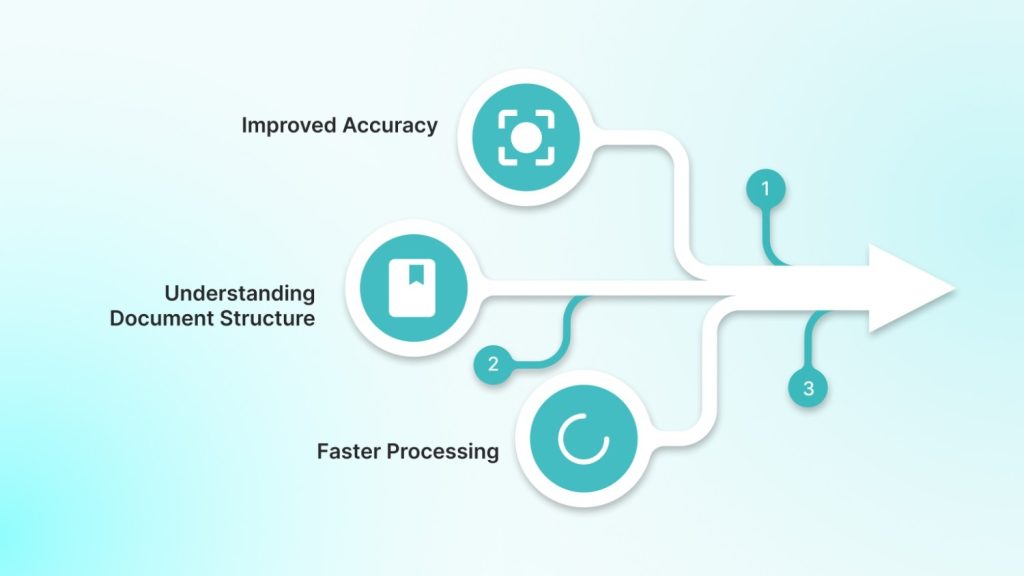
The benefits of combining OCR and AI in Intelligent Document Processing (IDP) are many:
- Improved Accuracy: OCR combined with AI can analyze both structured and unstructured data, leading to higher accuracy rates in document processing. AI corrects the mistakes made during OCR text extraction, ensuring that businesses get reliable data.
- Understanding Document Structure: AI provides deeper insight into the structure of documents, whether it is identifying key fields in a form, classifying documents, or recognizing entities like names, addresses, and dates. This contextual analysis allows for better processing of complex documents.
- Faster Processing: IDP significantly reduces the time spent manually reviewing and extracting data from documents. It speeds up workflows in industries like finance and healthcare, where timely processing is critical for compliance and decision-making.
Automate document processing, reduce manual effort, and gain deeper insights with our AI & ML solutions. Explore DEVtrust’s AI & ML Solutions
Future Potential and Innovations of OCR and AI
The future of OCR is closely tied to AI’s evolution. The combination of OCR and AI is set to transform the direction of document processing in the years to come. Here are some predictions for the future of OCR and AI integration:
- Self-learning OCR: Future OCR systems will be more self-sufficient, learning and improving their text recognition capabilities based on user feedback and real-world data.
- Real-time Document Processing: With AI’s ability to process and understand data faster, OCR systems integrated with AI will allow for real-time document processing, providing businesses with instant access to important information and improving operational efficiency.
- Smarter Document Categorization: AI will enhance the categorization and classification of documents, enabling businesses to automatically route documents to the relevant departments for further action, thereby reducing the need for manual intervention.
- Advanced AI-driven Analytics: AI-powered OCR will not only extract text but also provide advanced analytics, uncovering insights from data that would otherwise go unnoticed.
Also Read: 8 Best AI Productivity Tools in 2025
Conclusion
The integration of OCR and AI is shaping the future of document processing, enabling businesses to automate workflows, reduce errors, and gain deeper insights from their documents. While OCR remains an important tool for text extraction, it is AI that enhances its capabilities, allowing for smarter, more efficient data processing.
As industries like healthcare, finance, and legal sectors continue to adopt OCR and AI technologies, the future holds great promise for even more innovative applications. By embracing these technologies, businesses can achieve greater efficiency and stay ahead in the business world.From intelligent document processing to predictive analytics, DEVtrust delivers custom AI & ML solutions built for your growth. Partner with DEVtrust to Transform Your Business with AI & ML
Understanding OCR and AI: Differences and Applications
Is OCR AI? Explore the similarities and differences between OCR and AI. Click to discover more.
Contact Us